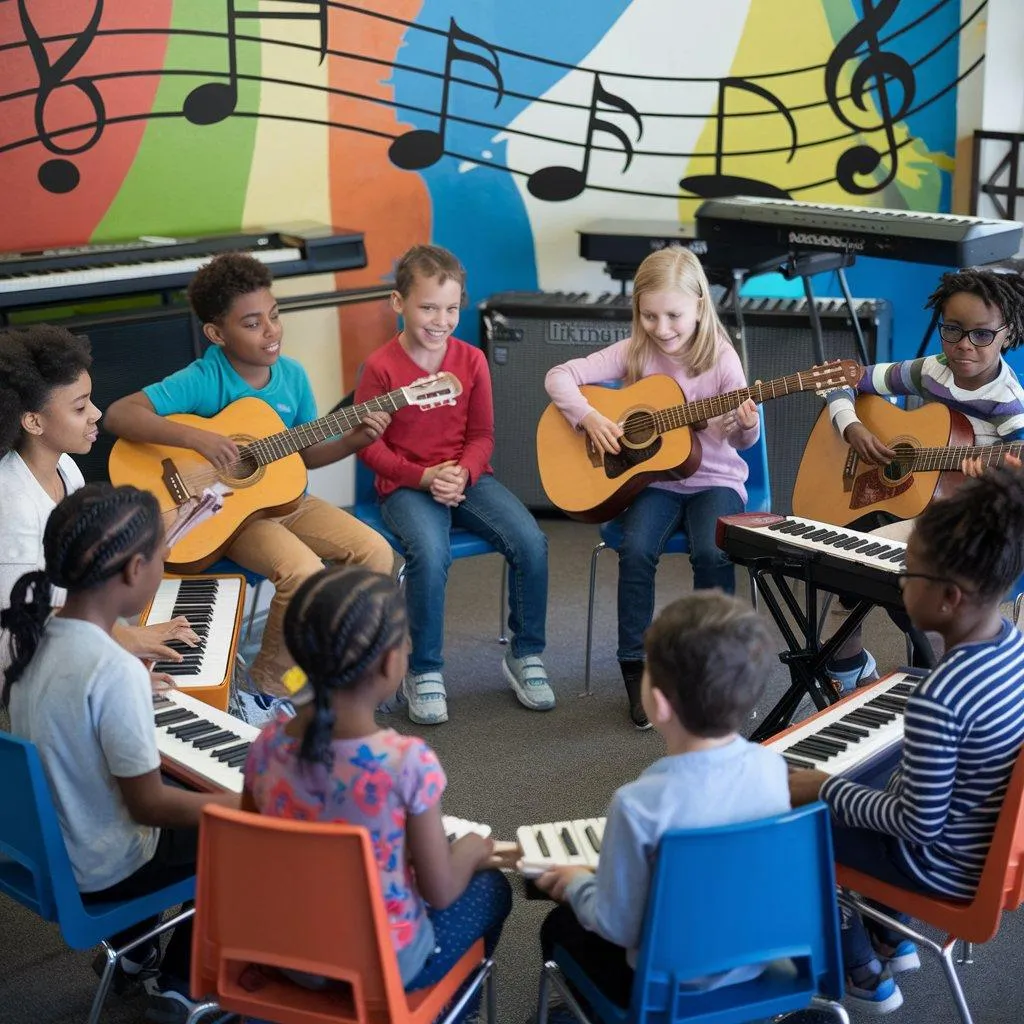
Why Children’s Music Matters: The Science of Learning Through Song
Music has a magical way of capturing attention, sparking joy, and making learning stick—especially for young children. From the ABCs to counting songs, we’ve used music to teach for generations, but have you ever wondered why it works so well?
It’s not just fun—it’s science. Research shows that music accelerates brain development, strengthens language skills, improves memory, and even supports emotional and social growth. Let’s dive into why music is one of the most powerful tools for early learning—and how you can use it to help your child thrive.
Music Supercharges Early Brain Development
A child’s brain is constantly forming new connections, absorbing information, and growing at an astonishing rate. Music activates multiple areas of the brain at once, strengthening these neural pathways. Studies from the University of Southern California’s Brain and Creativity Institute confirm that musical experiences in childhood enhance language acquisition, reading skills, and even problem-solving.
Think about it—songs naturally introduce rhythm, patterns, and repetition, helping children process and retain information faster. Whether it’s a song about the alphabet or a catchy tune about counting, music transforms learning into a multisensory experience that the brain holds onto.
Songs Lay the Foundation for Language & Literacy
Ever notice how children can sing their favorite songs before they can fully speak? That’s because music naturally breaks down words into smaller sounds, making it easier for young learners to recognize phonemes—the building blocks of language.
Music also strengthens reading comprehension and fluency by reinforcing word patterns and pronunciation. That’s why alphabet songs, rhyming tunes, and phonics-based music are so effective in teaching early literacy. The repetition in songs helps children develop a deep understanding of language structure—without even realizing they’re learning!
Music Makes Learning Stick
Why do we still remember nursery rhymes and childhood jingles? Because music is one of the best memory tools we have. The brain processes music and memory in the same area, which is why pairing a melody with information significantly improves retention.
Think about the ABC song—most of us learned our letters this way, and it stuck for life. Songs create patterns that make facts easier to recall, whether it’s spelling rules, sight words, or even the days of the week. Music turns information into something children can sing, remember, and use.
Beyond Learning: Music Builds Social & Emotional Skills
Music isn’t just about academic growth—it’s a powerful tool for emotional and social development. Singing and dancing release dopamine and oxytocin, the brain’s “happy chemicals” that promote bonding and well-being.
Songs that explore feelings help children recognize and express their emotions, while group singing and movement activities teach important social skills like cooperation, turn-taking, and listening. In a world where communication is key, music lays the groundwork for emotional intelligence and human connection.
Music + Movement = A Winning Combination
Young children learn best when they’re active, and music encourages movement that develops coordination, balance, and motor skills. Whether they’re clapping to a rhythm, dancing to a beat, or following an action song, they’re strengthening both their bodies and their minds.
Research shows that rhythm-based activities improve motor development and listening skills, making music an essential part of early childhood education. Plus, moving to music keeps kids engaged, energized, and excited to learn!
Final Thoughts: Why Music is the Ultimate Learning Tool
Children’s music isn’t just entertainment—it’s a proven method for boosting brain power, strengthening language skills, improving memory, and fostering social and emotional growth.
By making music part of daily learning, parents and educators can turn ordinary moments into powerful learning experiences. Whether it’s a sing-along at breakfast, a movement game before nap time, or a phonics song to practice reading, the impact of music lasts a lifetime.
So, turn up the tunes, start singing, and watch your child learn, grow, and thrive—one song at a time. 🎶
Discover the Power of Music with ABCs Singing the Sounds
Kim Yarson is on a mission to make learning to read fun, effective, and engaging—all through music and song. With ABCs Singing the Sounds Courses, children learn phonics the right way from the start, using original songs designed to teach letter sounds, prefixes, suffixes, and even tricky vowel sounds like the schwa!
Want to see how it works? Try it FREE for 14 days! 🎶
Join the thousands of parents and educators using music to unlock literacy for kids ages 3-9.
Start Your Free 14-Day Trial Today!
